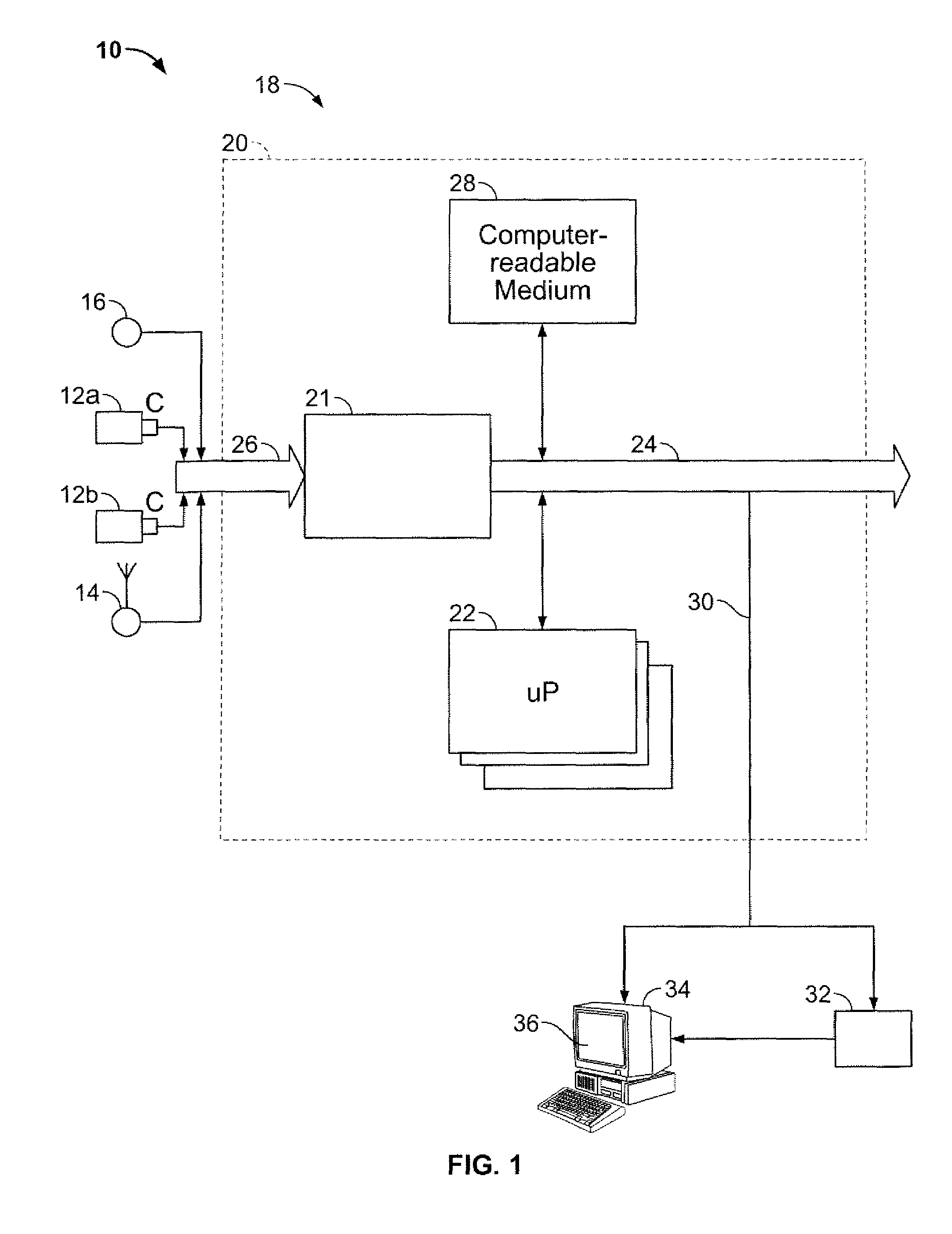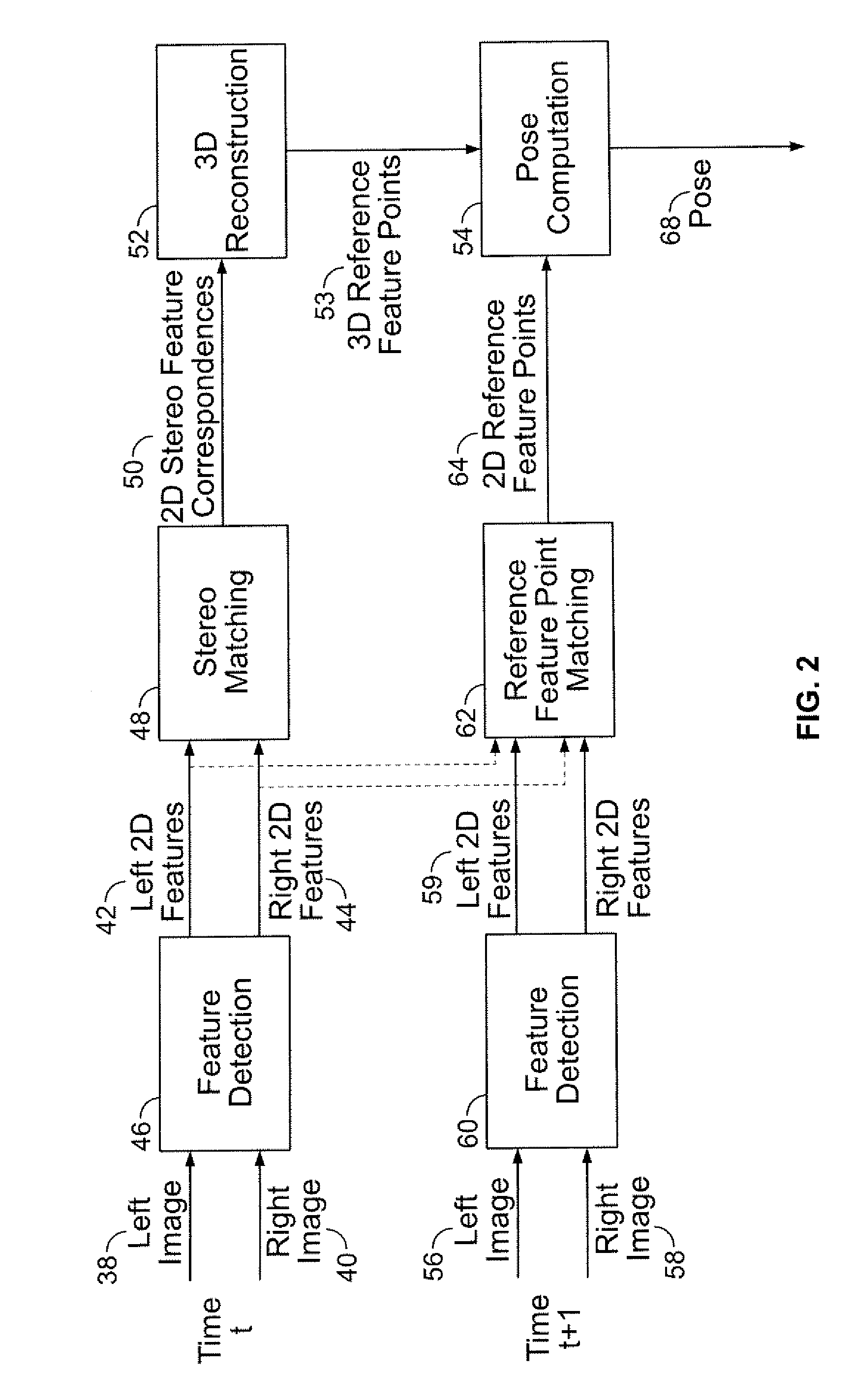Stereo-based visual odometry method and system
a visual odometer and stereo-based technology, applied in the field of vision systems, can solve the problems of many existing navigation systems that do not function very well, gps cannot work reliably, visual odometer systems can often drift over time,
- Summary
- Abstract
- Description
- Claims
- Application Information
AI Technical Summary
Benefits of technology
Problems solved by technology
Method used
Image
Examples
Embodiment Construction
[0018]The following embodiments are intended as exemplary, and not limiting. In keeping with common practice, figures are not necessarily drawn to scale.
[0019]Referring now to FIG. 1, a stereo-based visual odometry system is depicted, generally indicated at 10. By way of a non-limiting example, the system 10 receives digitized video from a pair of stereo images originating from a stereo camera or a pair of monocular cameras configured as a stereo camera 12a, 12b, which may be rigidly mounted on a frame relative to each other and designed to cover overlapping fields of view. The camera(s), 12a, 12b, have been calibrated to determine their intrinsic parameters and the rigid transformation between the two images. To capture positions in real world coordinates, the system 10 may be equipped with a global positioning system receiver (GPS) 14. The system 10 may also be equipped with an inertial measurement unit (IMU) 16 (e.g., a CloudCap Crista) to capture the orientation of the measureme...
PUM
 Login to View More
Login to View More Abstract
Description
Claims
Application Information
 Login to View More
Login to View More - R&D
- Intellectual Property
- Life Sciences
- Materials
- Tech Scout
- Unparalleled Data Quality
- Higher Quality Content
- 60% Fewer Hallucinations
Browse by: Latest US Patents, China's latest patents, Technical Efficacy Thesaurus, Application Domain, Technology Topic, Popular Technical Reports.
© 2025 PatSnap. All rights reserved.Legal|Privacy policy|Modern Slavery Act Transparency Statement|Sitemap|About US| Contact US: help@patsnap.com



